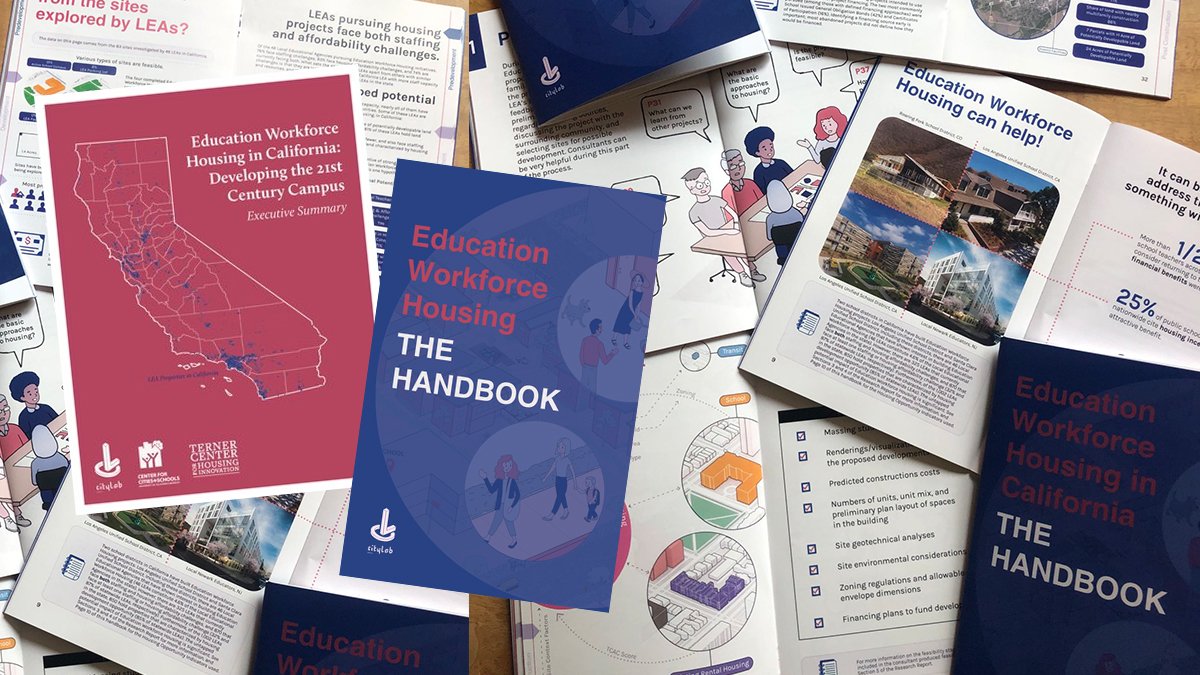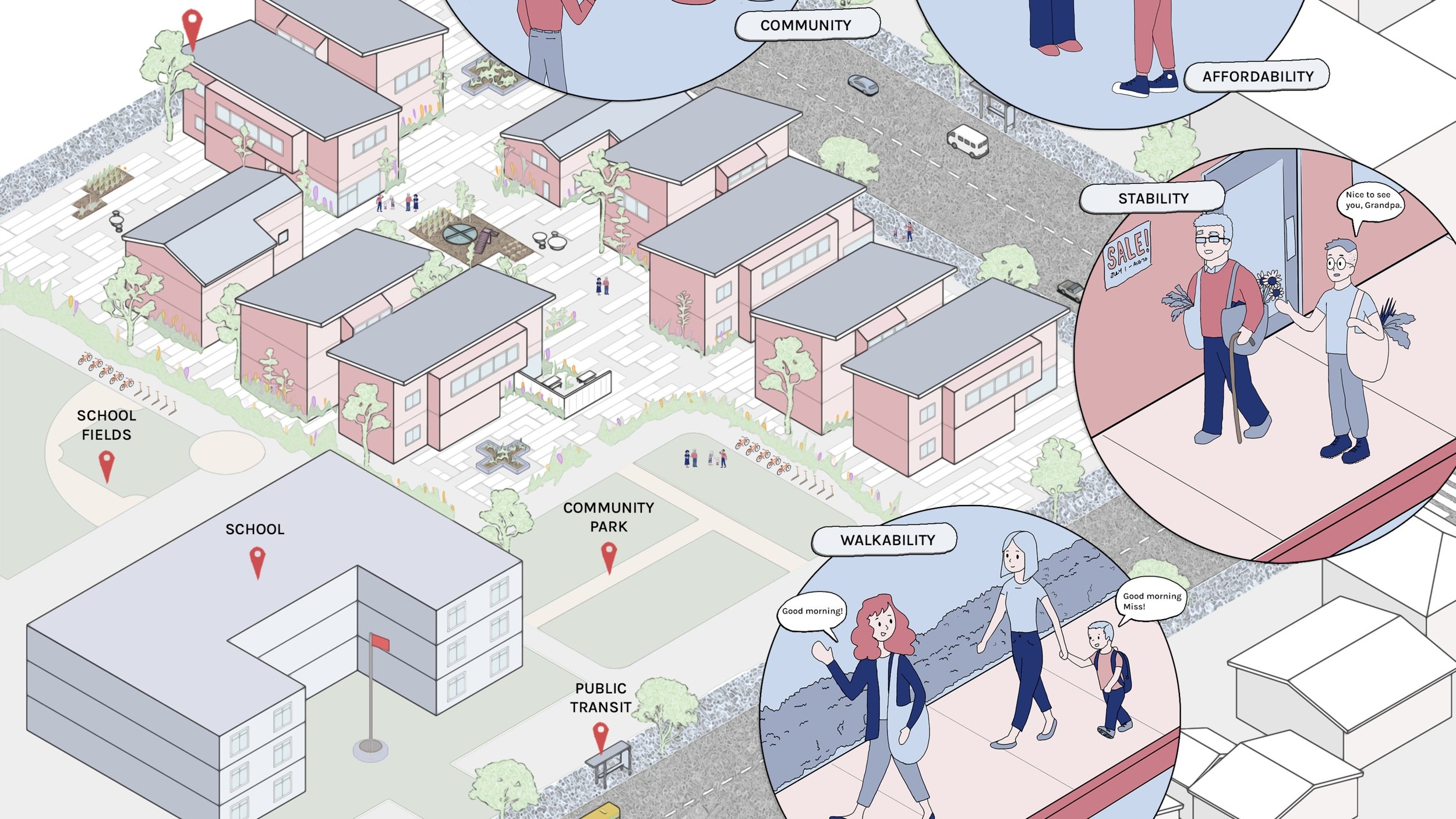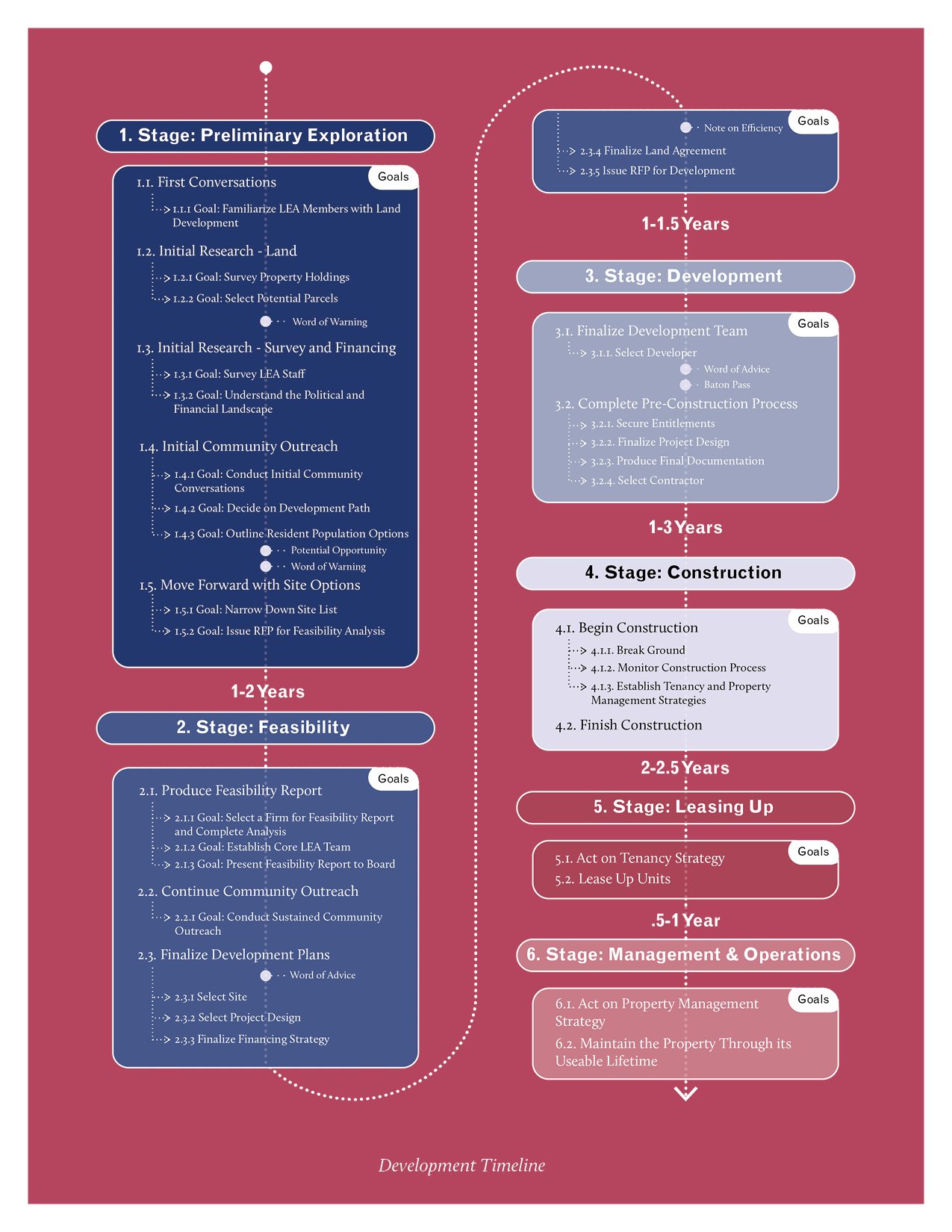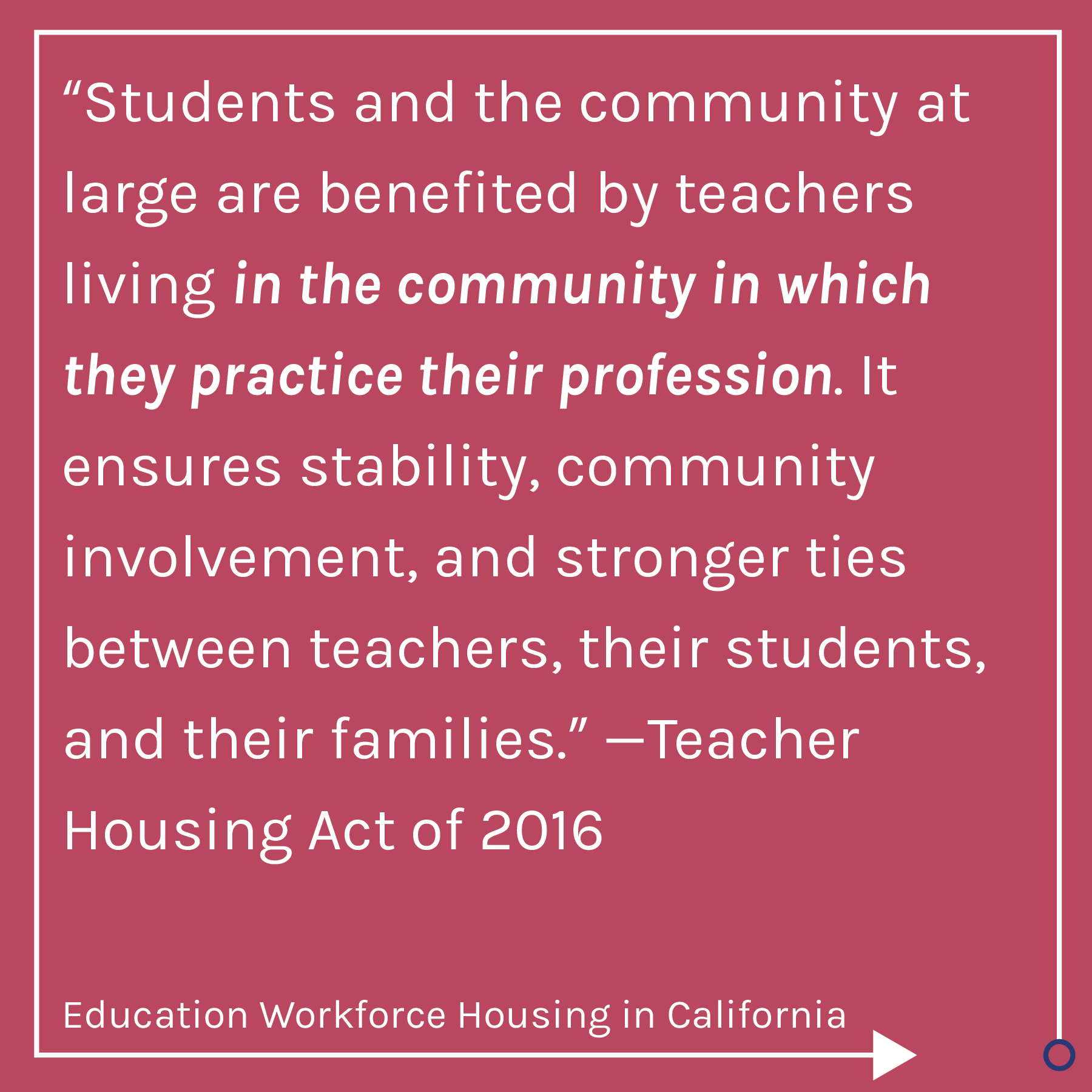






Education Workforce Housing in California: Developing the 21st Century Campus
Every county in California has public land to build housing for teachers and school staff.
Education Workforce Housing in California: Developing the 21st Century Campus, a report and companion handbook, provides a comprehensive overview of the potential for land owned by school districts to be designed and developed for teachers and other employees.
Read More
This research inventories tens of thousands of potential sites, shows a range of housing design strategies, and lays out a roadmap for school districts interested in exploring this transformative opportunity to enable more teachers and staff to live in the communities that they serve. The report also makes important recommendations for state policy reforms to encourage education workforce housing. The report is accompanied by an illustrated Handbook that provides a how-to guide for school boards, administrators, and community members to advocate for and advance the development of education workforce housing on underutilized schools lands in communities across California.
In California schools, the housing crisis leads to worsening educational outcomes, high teacher turnover, and staffing shortages as employees struggle to live in the communities where they work - costs that are disproportionally borne by students in low-income schools.
The state’s growing teacher shortages have a disproportionate impact on already disadvantaged students. Addressing the housing affordability challenges that so many teachers face is an important step in both attracting and retaining teachers and improving outcomes for California’s students. - Elizabeth Kneebone, Research Director: Terner Center
Policy change, like the Teacher Housing Act of 2016, enables school districts to pursue affordable housing for employees, but leaders and policymakers must take additional steps to streamline and simplify the process for building housing on school lands.
School districts have a unique advantage in developing housing because they already own land in the communities they serve. The key is to look at where there might be opportunities to develop underutilized land or otherwise reconfigure uses on their properties. It’s about getting strategic and getting creative. - Jeff Vincent, co-founder: Center for Cities + Schools
California school districts own nearly 151,500 acres (approximately 10 Manhattans) of land. More than half (61%) of the potentially developable properties are located where entry-level teachers face housing affordability challenges. Four Education Workforce Housing developments have been built in California, and fifty more districts are pursuing projects.
This study shows that schools and housing are an excellent match, and by partnering with communities, great design solutions for different districts can lift up schools, neighborhoods, and the education workforce who will live there,” - Dana Cuff, Director: cityLAB
Press links
Mar. 8, 2022: 103.7 KSON (San Diego)
Feb. 24: KCBS-TV (Los Angeles)
Feb. 16, 2022: The Daily Californian
| Project Type: | Research, Design |
|---|---|
| Participants: | cityLAB Team Dana Cuff California School Boards Association Jane Blumenfeld, cityLAB UCLA |
| Timeline: | 2019-22 |
| Themes: | Affordable Housing, Postsuburban City, New Infrastructures |




